Total War: Three Kingdoms warlords guide
Learn the strengths and weaknesses of Three Kingdoms' faction leaders.

As one empire falls and another begins to take form from the ashes, warlords across ancient China do battle on the field and at the negotiating table. Choosing which one of them to take control of in Total War: Three Kingdoms isn’t a throwaway decision and shouldn’t be made based on which colour you prefer, although yes, Kong Rong’s particular shade of blue is very tasteful.
Every warlord comes with their own faction benefits, unique units and buildings, perks and penalties, and starting positions which will affect not just your playstyle but your overall objectives and how to go about them. Here’s the cliff notes on each of the base game’s warlords.
Cao Cao—Strategic Mastermind

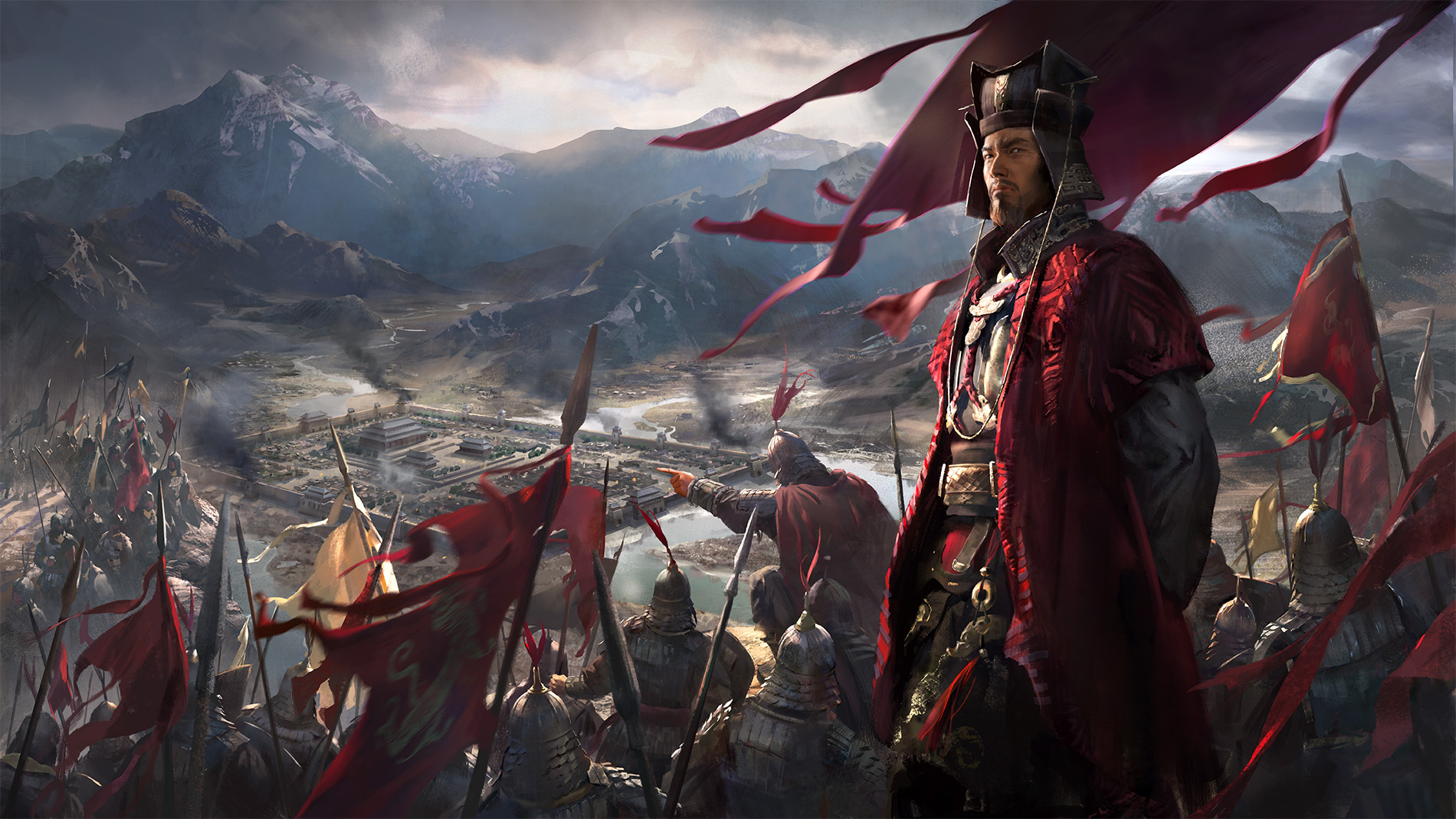
Expand your game with our round-up of the best Total War: Three Kingdoms mods.
Cao Cao is a great pick for your first Three Kingdoms campaign. He’s endowed with great diplomatic perks, a couple of strong unique units, and starts the game in a strong territorial position. If you haven’t got stuck into a campaign yet, treat yourself to his advantages.
Starting position: Cao Cao begins with three regions already under his control, and a bit of breathing room in the first few rounds before the likes of He Yi to the south and that bloody, /bloody/ Yuan Shao in the north start to close in and start to make his life more difficult. The territory to his east is especially easy pickings unless the aforementioned warlords move in and take them over.
Hero class and playstyle: Cao Cao is one of five Commander class heroes and is thus pretty great at inspiring his troops, at the cost of being a bit useless at melee. It’s therefore best to keep him surrounded by melee units. Cao Cao also enjoys -10% unit upkeep and +15 military supplies, and has access to two cavalry units from the start of the game that are otherwise unlocked at level 3 and level 6. Coupled with that reduced unit upkeep cost, that brings a huge advantage to early game combat, meaning it’s easy to gain quite a bit of territory in the first couple of years while everyone else is still yawning and stretching.
It’s not all about fighting with Cao Cao, though. His faction specialisation is Credibility, which means he gains more over time as a passive bonus, has an influence over diplomatic relations other than his own, and he can kick off proxy wars to weaken opponents without getting his hands dirty.
Unique features: Cao Cao has two unique building types. Farming Garrisons are really handy because they allow soldiers to work the land and increase food yield in the region of the garrison while also being on hand to defend it. Tungtian Conscription, in the military building branch, increases recruitment rate at the cost of population growth, but also boosts seasonal retinue and food production. Those two buildings work brilliantly together to keep Cao Cao’s aggressive expansion rolling without compromising the basics of land and population management.
Keep up to date with the most important stories and the best deals, as picked by the PC Gamer team.
Liu Bei—Virtuous Idealist

After Cao Cao, lovely Liu Bei is probably Three Kingdom’s second-most favourable warlord for beginners and those looking for an easier ride in the early game. His unique resource, Unity, becomes increasingly powerful as the game progresses, and his unique ranged units give him an early game edge on the battlefield.
Starting position: Beginning over in the northeast of the map, Liu Bei starts nice and far away from that big bully Dong Zhuo, but he’s likely to face conflict with ultra-aggressive Yuan Shao and his many vassals before too long. With that said, he, er, doesn’t actually control any territory at the beginning of round one, so his first job is to wrestle control from the local militia - luckily he begins with the most powerful army of all the leaders. With that done, Liu Bei must decide whether to side with Cao Cao or Tao Qian in the next few turns.
Hero class and playstyle: Like Cao Cao, Liu bei is a Commander and thus receives a bonus to inspiration in his troops and gets -50% militia infantry upkeep and +4 public order just for being such a swell guy. After taking his initial territory, it’s best to keep the region of his overall control quite low in the early game and focus primarily on generating his unique resource, Unity. It’s accrued by keeping generals satisfied, which in turn is achieved by completing unique assignments. Unity grants bonuses to just about every other kind of income, and can also be used to take control of Han Empire territories without actually invading them.
Unique features: Liu Bei begins with two archer unit types which don’t unlock for the others until levels 3 and 6, which is especially handy for him given that archers have increased range in Three Kingdoms versus prior TW games. His unique building, Shu Han Tax Collection, increases peasant tax income at the expense of public order, and he has two unique diplomatic/settlement options, Confederate and Integrate, which allow him to gain new territories outside of battle by flexing his diplomatic muscle and spending Unity.
Sun Jian - The Tiger of Jiangdong

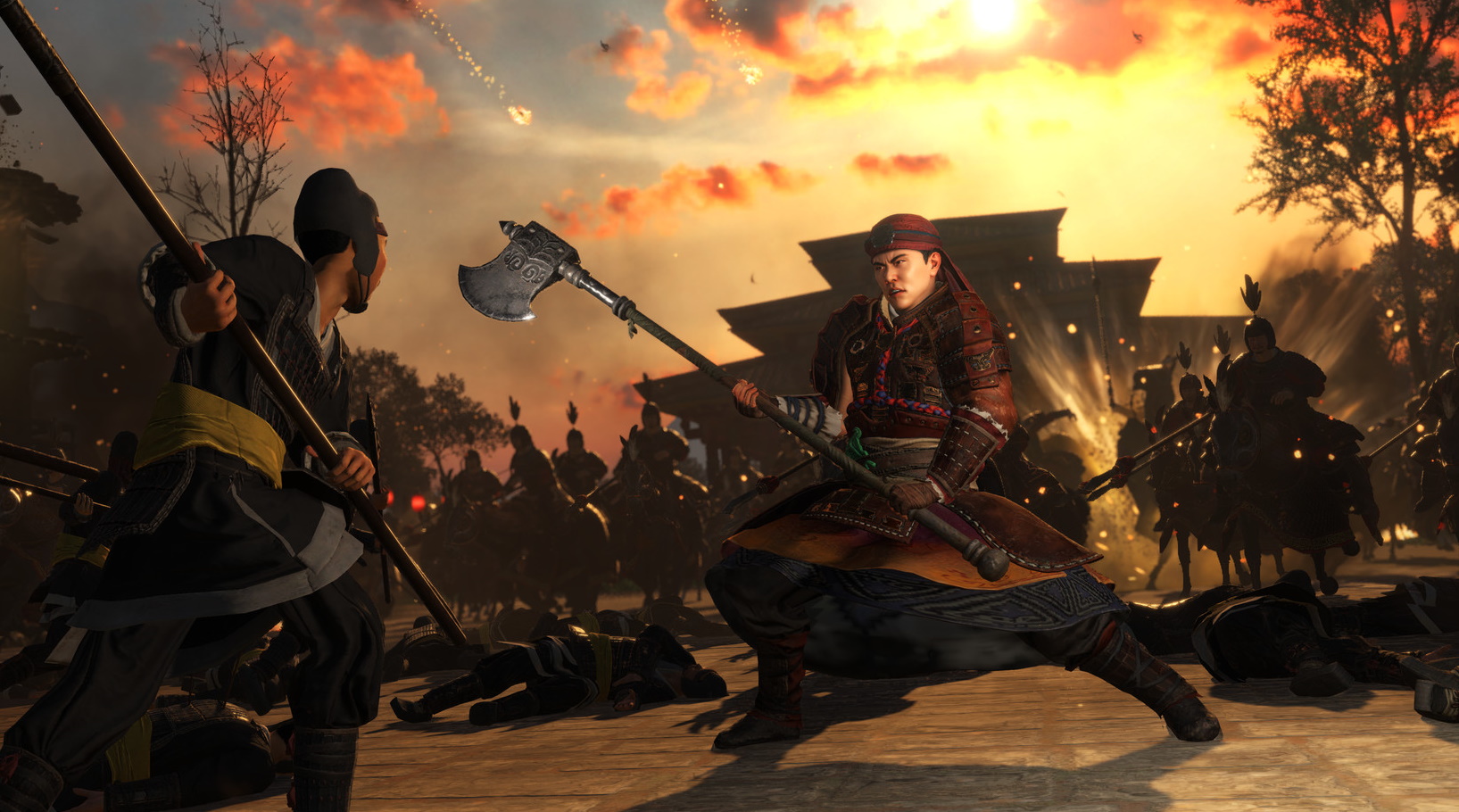
Find more tips in our Total War: Three Kingdoms beginner's guide.
Sun Jian is a super-aggressive warlord with plenty of perks for going after territories early and maintaining a large army. Inevitably, it’s a risk-reward tradeoff that’s perhaps better suited to players with either a lot of Total War experience or a few prior Three Kingdoms campaigns under their belts.
Starting position: Down in Jianling, Sun Jian begins in enemy territory and must make his way south to reach his family. Tough start, then. After that his initial dilemma is to side with either Yuan Shu or slightly closer neighbour Liu Bao. These two are at loggerheads from turn one, so your decision isn’t just about buddying up to a friend but also about who you make enemies with from the outset.
Hero class and playstyle: Sun Jian is a Sentinel class, which gives himself and his troops great staying power on chokepoints. He’s all about Heroism, a unique faction resource that reduces unit upkeep cost, improves recruitment and boosts public order. It’s achieved by sustaining fewer losses than the enemy in battle, so Sun Jian should be played super aggressively to keep those bonuses rolling in.
Unique features: Mercenary Captain Retinues are recruitable immediately for Sun Jian and don’t need any mustering time, while his unique archer, infantry, and cavalry units give him the chance to create a well-rounded army right at the beginning of the game using better units than his opponents have access to until later levels. His Mercenary Outpost building boosts income from commerce and mercenary replenishment. It really is all about keeping a big army rolling into enemy territory with Sun Jian, then.
Gongsun Zan—The Ironfist General
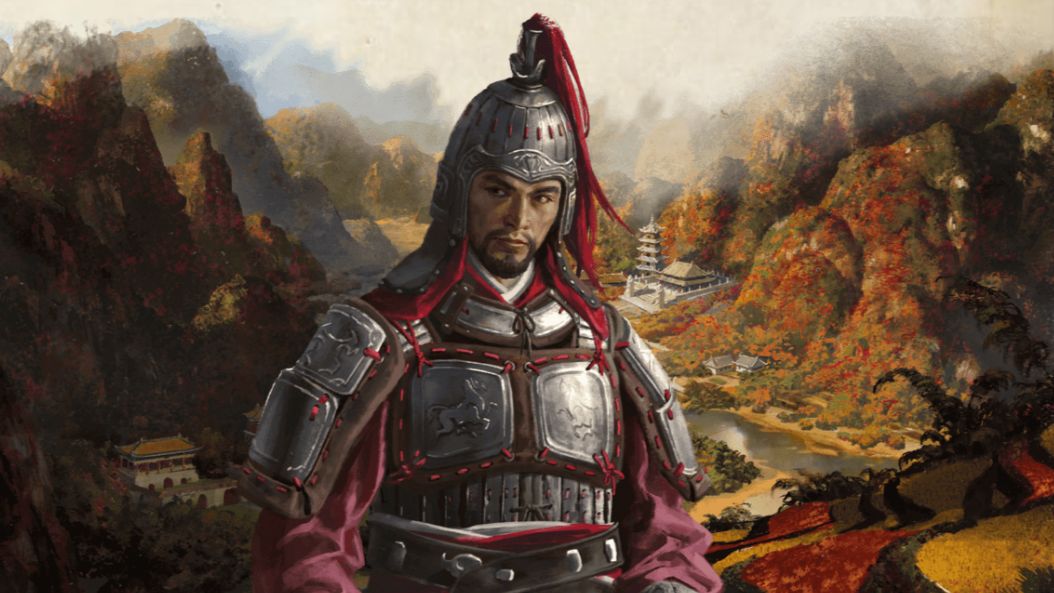
Here’s a military-minded warlord for players who like to focus on their armies and let generals take care of civic governance too. He’s particularly strong in defense, so if you’re sick of being routed by the Yellow Turban Rebellion or some particularly nasty neighbours he’s a good pick.
Starting position: Gongsun Zan’s start position in Youbeiping Commandery in the northeast corner of the map is relatively safe in the early game, but expansion’s going to be tricky. Liu Yu is just to the west, and he’s not going to go easy on the territories separating you. At the beginning of the game you’re not in an amazing position to invade enemy ground either, so a long-game approach is best.
Hero class and playstyle: As a Vanguard, Gongsun Zan’s fantastic at breaking through enemy troops but is weak to other generals, so a bit of micromanagement is required on the battlefield. He doesn’t have his own unique faction resource, but is able to use generals in administration posts and gains 50% to his reinforcement range. This is really handy when defending, since you don’t need to move armies as close to your battling units in order for them to become effective.
Unique features: The Military Government unique building is a real highlight of Gongsun Zan’s perks, increasing income from all sources and public order. Meanwhile, his two mounted archer units offer great mobility and range in the early game before other factions unlock them.
Yuan Shao—The Dragon of the Yuan

A real early and mid-game threat who can grow into an almost insurmountable force if left unchecked thanks to his knack for forging alliances, Yuan Shao is also handy on the battlefield as one of the game’s five Commander class warlords.
Starting position: Yuan Shao starts in a really favourable position which plays to his strengths. All around him in the north of the map are agricultural provinces which can be easily taken over, and weaker factions he can steamroll into vassals thanks to his diplomatic silver tongue. Before long the whole Wei Commandary should be in his control, and also early on he’ll have to choose to side with either Gongsun Zan and Han Fu.
Hero class and playstyle: Another of Three Kingdoms’ Commanders, Yuan Shao can inspire his troops better than most, and can use his two unique polearm infantry units to keep him safe in battle. He’s also able to recruit captains who bestow bonuses to specific unit types, and that offsets his relative weakness to other Commander warlords in battle. Since he enjoys a morale bonus and a 50% reduction to hiring and maintaining captains’ units, it’s a wise idea to keep a medium-to-large army around him at all times. Doing this as early as possible lets you capture a fairly large territory, and brandish that power to vassalise other states.
Unique features: Yuan Shao’s captains replace the traditional heroes and buff combat units when enstated. His two unique units, both polearm infantry, have great melee range, while the Yuan Administration Office available to him boosts income, public order, and pedigree growth.
Yuan Shu—The Ambitious Powermonger

Not to be confused with Yuan Shao the other ambitious powermonger, Yuan Shu has great bonuses to prestige, income and public order but, bless him, he’s not so hot at the negotiating table.
Starting position: Yuan Shu starts the game right in the thick of it. With Dong Zhuo bordering his lands to the north, Liu Biao to the south, and He Yi surrounding him across the east, his expansion potential is extremely limited. His Guanxi trait makes him particularly prone to falling out with those around him, so overall he’s one of the most challenging warlords to take control of. In the early game, it’s about carving a route out of that hostile circle then holding onto your territory in the following fallout.
Hero class and playstyle: Yet another commander, Yuan Shu has a few battlefield bonuses but he’s really more about increasing legitimacy as quickly as possible and convincing other factions of his claim to the throne. He goes about this by his unique faction resource, Legitimacy. Building it up increases prestige and income, but boy do other factions hate you for it.
Unique features: Two unique assault infantry units are available to Yuan Shu from turn one, and these are a nice fit with his decreased melee ability as a Commander - keep them close to him on the battlefield. They’re especially hard to rout since their morale’s so high. The unique Zhong Administration building increases income but—curses!—decreases that all-important Legitimacy, so it’s only to be used when you’re in an economic bind.
Kong Rong—The Master Scholar
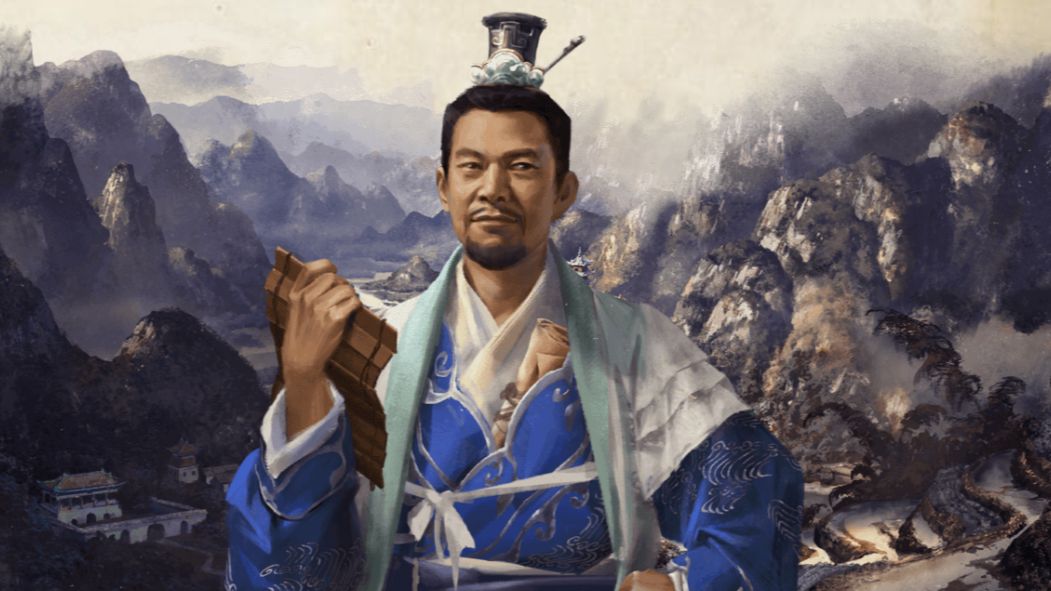
Kong Rong’s an interesting warlord whose strengths lie primarily outside the battlefield, making him a great pick for those looking to win a campaign without stomping everyone into submission on the battlefield.
Starting position: On the northeast coast, Kong Rong begins hemmed in by other factions and fighting the Yellow Turban Rebellion. Not an easy ride in the early game, then. There’s some easily attainable land on that eastern outcrop, but except for that it’s hard work expanding Kong Rong’s borders the traditional way. Another warlord for experienced players, although things do get easier once the Yellow Turban Rebellion are sent packing.
Hero class and playstyle: Kong Rong’s class is Strategist, and that allows him to strengthen his own troops and actively weaken enemies, but he’s no great shakes in direct combat so it’s best to keep him placed behind his entire army. His real strength is in brokering trades, however. His unique resource, Trade Monopoly, can be deployed during diplomatic talks to greatly increase the income from trades - legend has it he’s a descendent of Confucius himself, so that figures. Using that trade power, Kong Rong can easily become one of the richest warlords on the map, but he can’t directly declare himself Emperor however much he has in the coffers. Instead, he has to take the capitals of the existing Emperor. That’s the interesting wrinkle with Kong Rong - he’s suited to a /mostly/ non-violent playstyle.
Unique features: Two crossbow units comprise Kong Rong’s uniques, both offering great range and great attack stats against armoured units. He can also create a unique Academy of Culture, buffing growth of population, income and public order, access to a unique Educational Program task which increases income from trade. Loves a trade, that Kong Rong.
Liu Biao—Gentleman of the Han

Frankly, Liu Biao isn’t the most interesting warlord. Like a handful of others, he doesn’t gain access to a unique faction resource. Like a handful of others, he’s a Commander class. And like Kong Rong, he can’t declare himself Emperor. Not the most bristling with individual personality then, but Liu Biao’s academic focus offers a different approach to victory.
Starting position: Starting in the middle of the map, surrounded by major players Sun Jian and Yuan Shu, and weeping as the Han Empire lies dismantled, Liu Biao is another warlord with an uphill struggle from turn one. He also has rebels in his Commandery to deal with, so that’s item one on the agenda. After that, Liu Biao’s best bet for expansion is to head east or west before his neighbours gobble up those territories for themselves.
Hero class and playstyle: Another Commander, Liu Biao is one to keep away from direct combat on the battlefield and instead employ to support melee units. Instead of a faction resource, Liu Biao has additional positions in his court for academics, who in turn provide bonuses to Harmony, knowledge, and abilities. Since he also enjoys a +10 satisfaction bonus and +2 public order, Liu Biao’s in good shape to extract the most from the territory he holds and run an efficient empire. Since he can’t declare himself Emperor though, he’ll have to get his hands dirty at some point and take the Emperor’s capital by force in order to win.
Unique features: His two unique units are both heavy infantry with wooden weapons, who are particularly adept at dealing with cavalry. His Lodging building increases character experience and income from commerce.
Ma Teng—Protector of the West
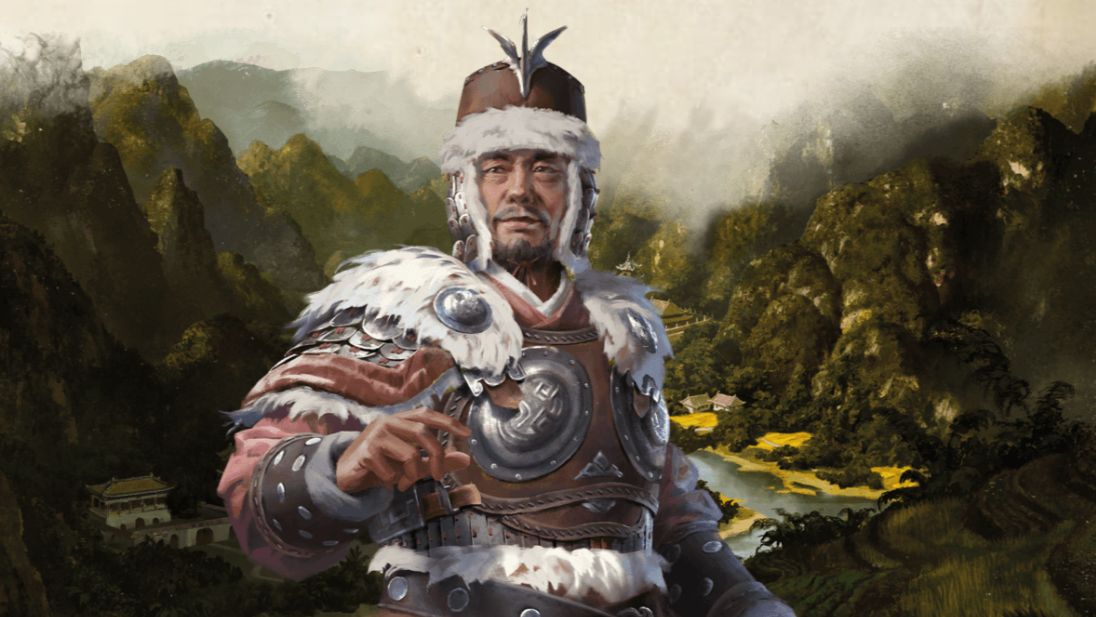
Based in the northwest, Ma Teng has some hostile neighbours and favours a nomadic playstyle based on keeping large armies outside his settlements - something he’s able to do more easily than most thanks to his faction perks.
Starting position: Beginning right next to Dong Zhuo just before the tyrant’s downfall, Ma Teng starts turn one wrestling for control of the Wudu Commandery with rebels. Shortly afterwards he must decide whether to engage in a war with the splinter factions on his doorstep, or leave them to it and pursue territorial gain in slightly easier territory to the west. The risk in doing that is that one of those splinter factions might become insurmountably powerful if left unchecked.
Hero class and playstyle: Like the two other Vanguard class warlords, Ma Teng’s very effective when fighting enemy troops on the battlefield, but weak to other generals. No matter, though - he’s suited to keeping several large armies at once, and filling them with powerful cavalry units. Instead of a unique faction resource, Ma Teng’s armies forage for food when encamped and he gets a bonus to military resources, meaning it’s easier to keep armies at a high headcount when marching far from friendly territory. Due to his three unique cavalry units and +10% shock cavalry bonus, you should stack those armies with horsemen.
Unique features: Ma Teng’s three unique units - horse archers, shock cavalry and melee cavalry, all enjoy -10% upkeep cost and bring great range and mobility to battle. And since they’re available well before other factions will have access to similar troops, Ma Teng holds a military advantage in the early game that can be exploited to mop up some of Dong Zhuo’s old territories. His Xiliang Supply Lines provide food and military supplies to his armies—but also provide the latter to enemy armies.
Zhang Yan—King Of Black Mountain
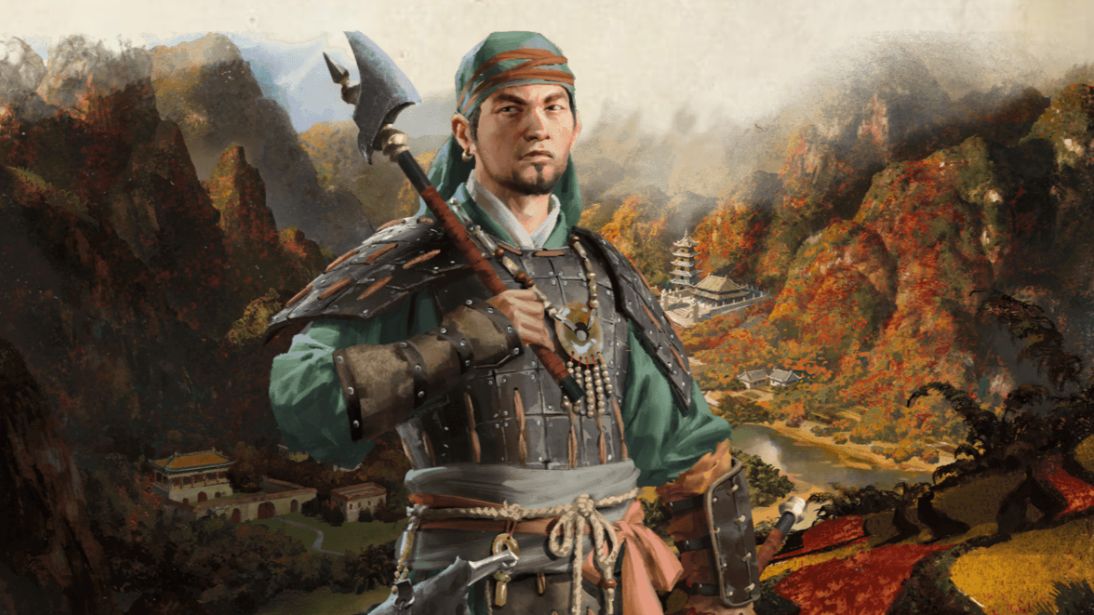
If you’re looking for a playthrough full of careful settlement micromanagement, devilish negotiation and lots of trading, Zhang Yan probably isn’t going to do it for you. Perched up on the Black mountains in the very north of the map, he’s all about ambushing opponents.
Starting position: This is as far north as any warlord gets, and as such the Black Mountains aren’t a terrible starting location in terms of imminent threats. Zhang Yan’s expansion options are limited by having nowhere to go further up north, though, so he will need to take on at least one powerful warlord to make progress on the map. Further south is Yuan Shao too, who’ll likely pose a significant problem to him after the first few turns - particularly if he seals a few alliances with your neighbours.
Hero class and playstyle: Along with fellow bandit warlord Zheng Jiang, Zhang Yan is a Champion class and thus excels at taking on enemy generals at the expense of being weak to other units. He’s best defended by the rangy spear and glaive infantry retinues. His big strength is in the ability to ambush enemy armies, attacking them from both sides and thus starting each battle with a big advantage. In lieu of any unique faction resource, this little perk must be fully embraced to make any headway with Zhang Yan, so it’s worth building up a well-balanced army as early as possible and picking off marching enemy units to weaken your neighbours. His armies don’t receive any penalties for fighting or travelling in forests, and he gets +25% post-battle income. Battling, then, is the bread and butter of this warlord’s campaign.
Outside of combat, Zhang Yan has the unique ability to negotiate with the Yellow Turban Rebellion, and can even form an alliance with them, which strengthens his position considerably.
Unique features: Black Mountain Marauders, Outlaws, and Hunters comprise Zhang Yan’s unique units, and these all reduce enemy troop morale by scaring them. Couple this with that ambush ability and you have a formidable military force.
His unique Black Mountain Hideout building offers three different paths, and three sets of perks: either better diplomatic relations with the Yellow Turban Rebellion and an increased spy limit, higher army limit and loot income, or increased public order, administrator slots, and better relations with Han Empire factions.
Zheng Jiang—The Bandit Queen
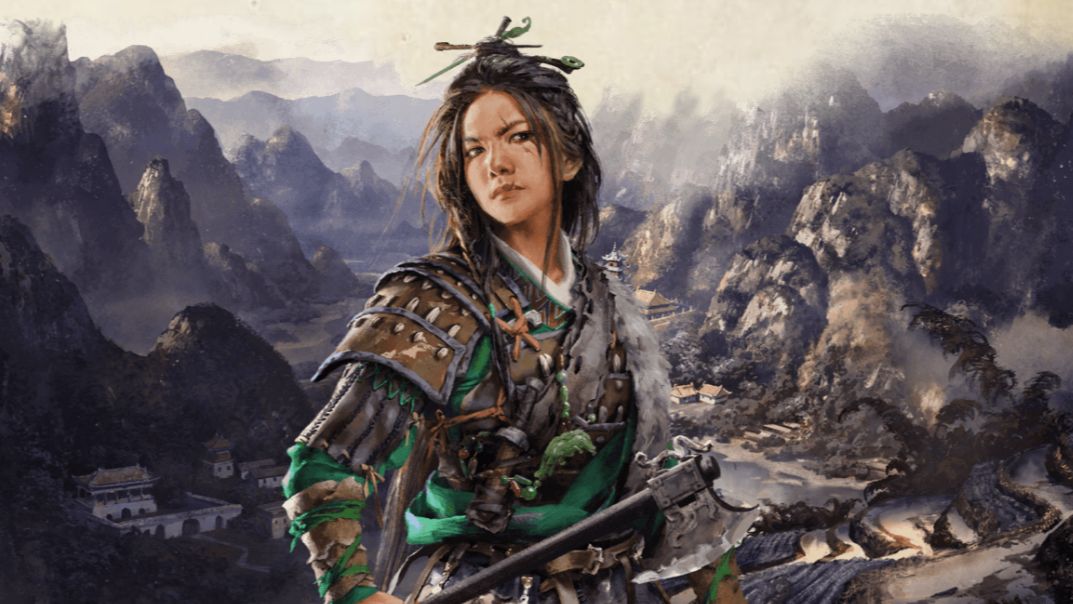
Zheng Jiang’s campaign is rated as the game’s absolute hardest, so it’s probably not a brilliant idea to select her if you’re embarking on your first campaign or still learning the mechanics. Like Zhang Yan she begins up in the Black Mountains, and she’s all about increasing her unique faction resource, Infamy.
Starting position: This is as tough as it gets. Up in the mountains, and already at war not just with Dong Zhuo and the Han Empire. There’s a glimmer of light in Zheng Jiang’s early dilemma with the possibility of joining forces with fellow bandit Zhang Yan, although particularly bold players can reject that alliance and take over his territory for their own. No territory nearby is particularly easy to come by, but heading east probably offers the easier path.
Hero class and playstyle: Another Champion class, Zheng Jiang can be used to wipe out enemy generals if you micromanage her on the battlefield and keep her away from direct combat with other troops. Again, it’s best to protect her with infantry units who have a decent range.
To prevail with Zheng Jiang you should focus on generating her unique faction resource, Infamy. This will grant you a lot ofof bonuses for prestige, satisfaction or tribute in diplomacy, but it does negatively affects relations with other factions. Don’t sweat that too much though - you’ve probably already pissed off all your neighbours. Infamy’s gained by winning battles and occupying settlements, so it doesn’t pay to be a pacifist with this warlord.
Unique features: Zheng Jiang's unique units are Hidden Axes and the Fists of the Bandit Queen, and can be used very effectively to charge enemy troops. Her Bandit Lair speeds up replenishment, at the expense of income.
Phil 'the face' Iwaniuk used to work in magazines. Now he wanders the earth, stopping passers-by to tell them about PC games he remembers from 1998 until their polite smiles turn cold. He also makes ads. Veteran hardware smasher and game botherer of PC Format, Official PlayStation Magazine, PCGamesN, Guardian, Eurogamer, IGN, VG247, and What Gramophone? He won an award once, but he doesn't like to go on about it.
You can get rid of 'the face' bit if you like.
No -Ed.


